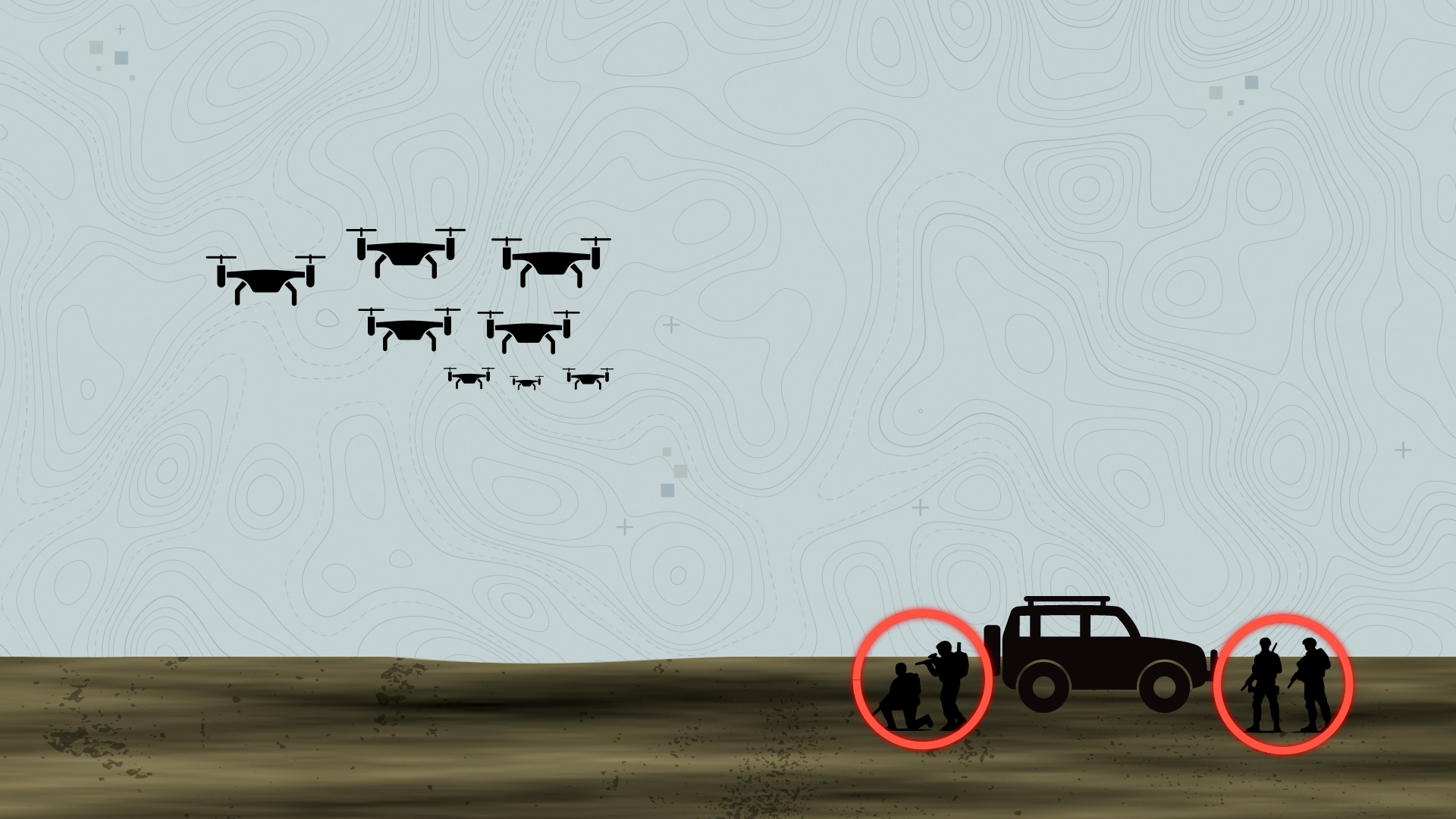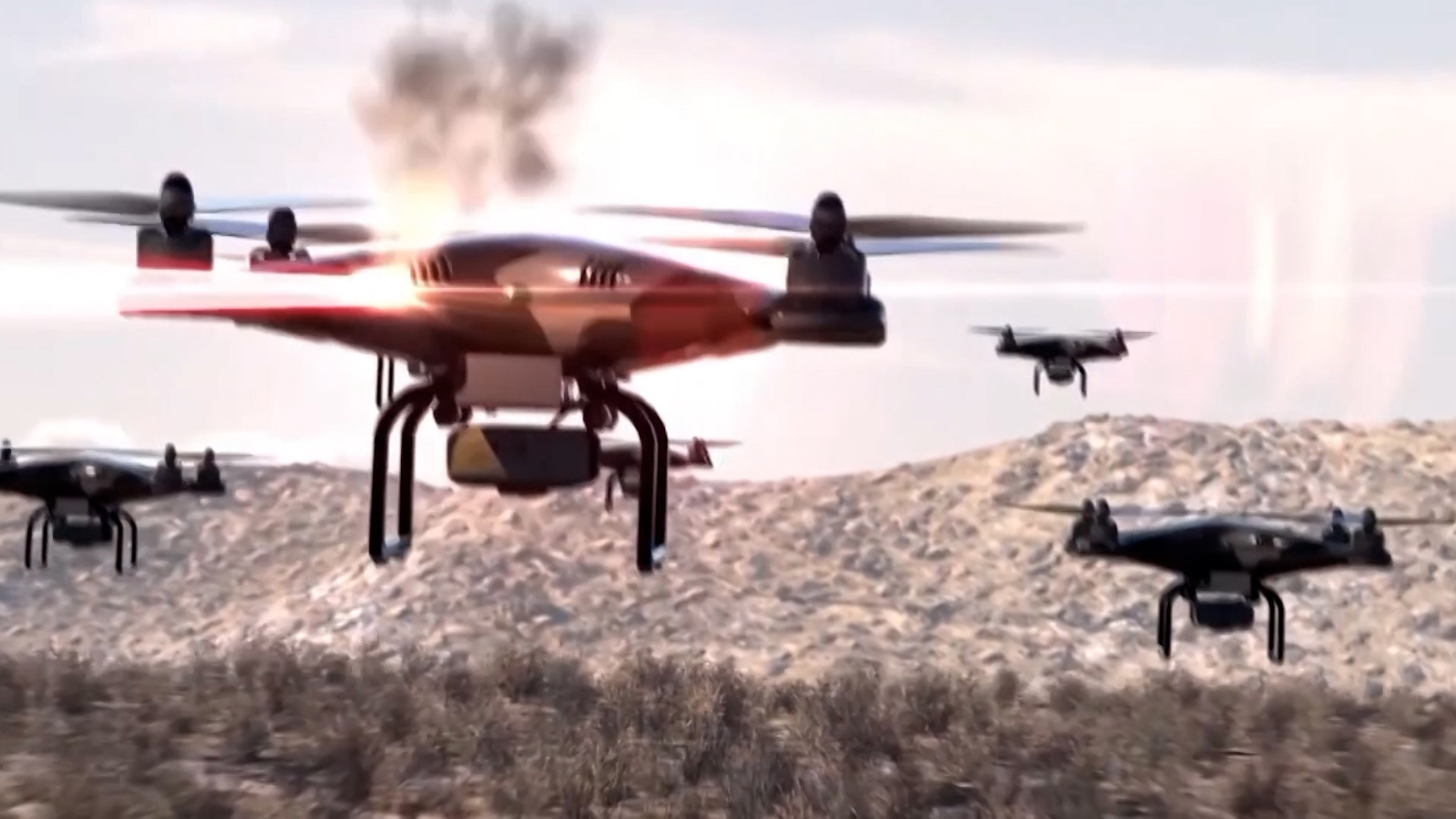AI-powered swarms that pick their own targets mark the future of drone warfare
Swarms of drones controlled by artificial intelligence looks set to be adopted by armed forces across the world in the months and years to come.
According to reports, three Ukrainian drones recently approached Russian positions and independently determined the moment to launch their attack using technology developed by Ukrainian company Swarmer.
The software apparently allows the drones to co-ordinate their actions in flight and to some extent decide on attacks independently. They can also take on a different role if one drone becomes inoperable or loses power.
What is an AI-powered drone swarm?
Drone technology expert David Hambling told FBS Forces News: "With a true AI drone swarm, there will not be a human piloting each drone.
"There will just be one human who's supervising the entire swarm."
The process starts with reconnaissance drones scouting out an area to locate potential targets.
Mr Hambling explained: "The human commander will then say 'yes, those look like valid targets - attack that, that and that'.
"The attack drones will then come in as a swarm, and between them they will work out which drone attacks which target, so they don't all go with the same target.
"And so you get one drone attacking each target in the first wave. After that, the reconnaissance drone will assess the damage and then follow-up drones will be assigned to anything that's not destroyed, until all the targets have been taken out and the human commander just needs to verify that and say 'job done - you can return home'."
However, Mr Hambling said integrating artificial intelligence with drones has proven to be more complex than people thought, which is why we're only getting reports now of AI drone swarms being used in combat.
Russia is thought to be using the technology too. "Equally, there are claims on the Russian side that they are using AI-powered swarms," said Mr Hambling.
"We haven't seen any solid evidence of that, but it seems quite plausible that they are at a similar level to the Ukrainians, probably a bit behind."

The future of AI-powered drones
Drones are already responsible for 80% of casualties in Ukraine and Russia, and now we have the first reports of AI drone swarms being used, that number could go up.
Powering drone swarms with AI has clear pros. Once given a target zone by an operator, they don't need continuous monitoring, they can't be jammed and they aren't restrained by the length of optical-fibre cables.
However, they cost a lot to make due to their advanced chips and extra cameras, they struggle in certain terrain and they're not fully reliable yet.
The issue of integrating AI with drones has been raised by MPs in the UK.
Benjamin Obese-Jecty, a former infantry officer, said during a debate in Westminster: "My concern would be control of AI, and knowing that the target that you're trying to prosecute is indeed still a viable target right up to the last safe moment.
"Once you lose control of that drone and it becomes AI-capable, in theory it could indeed switch to a more preferential target, which may be a good opportunity, or it may be a catastrophe that ends up as front page news."
But Mr Hambling predicted the world will start to see more drone swarms, both bigger and smarter.
He added: "I don't think it will take very long at all, seeing how things have evolved in Ukraine so far, before we start seeing swarm-versus-swarm combat.
"Before very much longer, we will see a drone swarm arms race with lots of people wheeling out increasingly capable swarms.
"And an awful lot is going to depend on how good their software is and how well it can cope with other swarms.
"So I can see there could be some very rapid change ahead."

Previous use of AI with drones
The concept of drone swarms has been tested by various nations including the US and China in the last few years.
We have also seen the use of artificial intelligence increasing, enabling Ukraine to successfully take on an adversary with much more fighting power.
A key example of this was Ukraine's Operation Spiderweb this earlier this year, where 117 drones took out a third of Russia’s strategic cruise missile carriers, worth billions of dollars.
Ukraine used artificial intelligence to ensure pinpoint accuracy, training the drones using AI inside an aviation museum so they could recognise and strike aircraft to maximise destruction.
Integrating AI with drone swarms would see them become more sophisticated and lethal.









